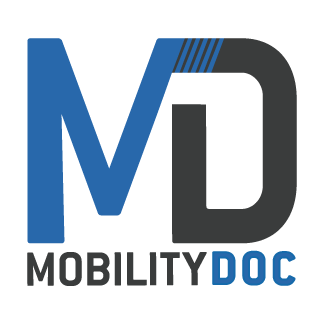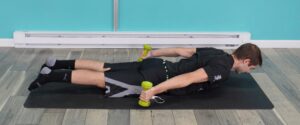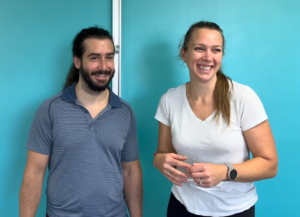If your hamstrings always feel tight—no matter how much you stretch—you’re not alone. Hamstring tightness is a very common complaint, especially in athletes, active adults, and anyone who sits for a living (hello, desk warriors 👋). But here’s the kicker: stretching alone isn’t always the answer.
What do your tight hamstrings really need? Targeted myofascial release—and we’ve got a quick technique using just a ball that actually works.
Why Your Hamstrings Stay Tight
Your hamstrings aren’t just “tight” for no reason. It can be from overuse, inactivity, and not properly being taken care of. The deep layers of connective tissue called fascia can get sticky and need a little more than just stretching.
That’s where myofascial release comes in. By using a ball (lacrosse ball, field hockey ball, etc.), you can apply pressure to those sticky spots, improve blood flow, and literally create more space for your muscles to move the way they should.

Pro Tip: Tennis balls sometimes have a little too much give and golf balls are too small and too hard… stick to the lacrosse, field hockey, or massage ball!
How to Do Hamstring Myofascial Release with a Ball
- Sit on a firm chair or box with your knees bent. (The couch is too soft!)
- Place a ball under one hamstring, starting high closer to the glutes.
- Sitting as upright as possible, slowly shift your weight to apply pressure and roll slightly forward and back.
- If you find a tender spot—pause now bend and straighten your leg 8-10 times
- Work your way down following the line toward the back of the knee, repeating in 3-4 spots per leg!
Watch The Myofascial Release Video:
Combine It With These Hamstring Stretches
Once you’ve done the release work and broken up connective tissue, your muscles are more receptive to lengthening. (I know what you’re thinking… lengthening means less tight!) That’s your golden opportunity to stretch and lock in the new mobility.
1. Seated Hamstring Stretch
- Sit with one leg extended, the other foot tucked in.
- Keeping a straight back and hinging from the hips, lean slightly forward (without forcing it).
- Hold for increments of 5 seconds for 30 seconds and repeat on the other side.
- To do this statically just hold for 30 seconds
2. Dynamic Runner’s Stretch
- Stand in a split stance with your back foot up on the toes.
- Keep your spine straight and hinge at the hips (as low as you can go you may need a box or bench to lean on).
- Your front knee should have a slight bend in it. Now, “floss” your hamstring by dynamically straightening and bending your front leg.
- Do this for 5 second holds for a duration of 10 reps or 30 seconds!
Why This Helps You Crush Movements Like RDLs
Now, there are 2 ways to do this… statically or dynamically. You can do this PRE workout dynamically (holding for 5 seconds and releasing for 8-10 reps) to help get your hamstrings ready to do movements like RDL’s that require a good amount of hamstring flexibility.
You can also do this statically. This would be post workout and you’d do longer holds of 30 seconds while stretching.
No matter what, when you release fascial tension and then stretch, your hamstrings are holding less tension and are more flexible. Plus, your muscles perform at their best when they are the proper length. So shorter muscles might present as weak when really they just can’t work properly! That means you’ll get more out of exercises like:
- Romanian Deadlifts (RDLs)
- Good Mornings
- Kettlebell Swings
- Sprinting and running drills
Translation? More mobility, better muscle recruitment, and less strain on your low back.
Your New Tight Hamstring Routine:
- Ball Release – 3-4 spots per leg (8-10 reps per spot)
- Stretch Dynamically – Seated or standing (your choice!)
- Train – Hit those hamstring exercises with better form and function to really solidify your new muscle length and re-train those tight hamstrings!
Try This RDL with A Twist To See How It Feels
Back pain that won’t quit? Don’t wait for it to get worse.
If you’ve moved past the basics and need real support for your back, MDRx Back is your next step. This 4-week, guided program is built for people who want to do more than just “manage” their pain—it’s for those ready to move better and feel stronger.
✅ Improve spine mobility
✅ Build true core stability
✅ Strengthen your back (safely!)
No fluff. No guessing. Just smart, progressive training from experts who’ve helped thousands stay active and pain-free.
💥 Don’t let back pain slow you down—start MDRx Back today and take the first step toward lasting relief.





